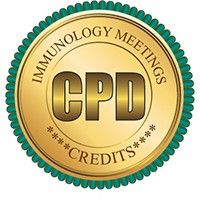
Kelly Yan
Novartis Institutes for BioMedical Research, USA
Title: High-level soluble expression, purification and characterization of active human midkine from Escherichia coli
Biography
Biography: Kelly Yan
Abstract
Midkine (MDK) belong to a newly evolving family of secreted neurotrophic and developmentally regulated heparin-binding molecules, which also includes pleiotrophin (PTN). Both proteins are involved in promoting neurite outgrowth. Various studies have shown that MDK is involved in cell mitogenesis, transformation, survival, migration and angiogenesis. Moreover, MDK is over-expressed in a number of human cancers; therefore it has become an attractive target for developing cancer therapeutics. Active recombinant human MDK (rhMDK) can be a critical reagent for cell assay development as well as generation of small molecule inhibitors or antibodies for therapeutic drug discovery. MDK is a cysteine-rich 13 kDa protein containing five disulfide bonds (C15-C39, C23-C48, C30-C52, C62-C94 and C72-C104). Expressing and purifying such a protein can be challenging, mainly because the disulfide bonds have to be properly formed to preserve its activity. Traditionally, proteins with disulfide bonds are purified under a denaturing environment and then re-folded. In this study, we expressed (rhMDK) in the Escherichia coli Origami 2 (DE3) strain, which carries a (trxB-/gor522-) double mutation. Soluble rhMDK was expressed at a high level in this strain and protein purification required only one step of heparin affinity chromatography followed by a size exclusion polishing step, without an inclusion body preparation and refolding process. Seven milligrams of rhMDK with high purity were obtained from a 3 L culture. All 10 cysteines were confirmed to be engaged in correct disulfide bond linkages by mass spectrometry analysis. Activity of purified rhMDK was confirmed by a neurite outgrowth assay using rat cerebellar granule cells. Our study demonstrated a very simple and useful technique for producing disulfide bonds-containing bioactive protein with high purity.

